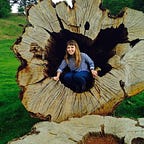Animated leeches and CGI glass eyes: Doing more with 3D objects for schools
The Science Museum Digital Learning team recently launched an online learning resource based on the Science Museum’s newly opened Medicine: The Wellcome Galleries. Building on the evaluation of our 3D objects pilot for Mathematics: The Winton Gallery, we decided to develop a photogrammetry-focused resource and push the concept further this time.
The main piece of feedback from the teachers who helped evaluate our Mathematics pilot (featuring just two fully 3D models) was ‘more objects please!’, so this time we scanned 20 items from the medical collections of the Science Museum Group and Wellcome. We were working against the clock, as the objects were being processed for transportation from Blythe House to the Science Museum.
Most objects were kept stationary as the photographers (we worked with Museum in a Box and Kira Zumkley) moved around, capturing hundreds of images. Others were placed on an automated turntable which rotated the objects precisely in tiny increments, at low speed to minimise the risk of damage. The GIF below shows you an accelerated version of the process — on the day, it took over 30 minutes to complete a full rotation.
Not all of the scans resulted in successful models unfortunately. The ‘Jedi helmet’ in the GIF was one of three objects which failed to mesh properly and couldn’t be salvaged. Several others needed post production work by a CGI artist (Sophie Dixon). For example, it wasn’t possible to really capture the beautiful glass eyes on this acupuncture model through photogrammetry alone.
Another request we had from our pilot project evaluation was to bring the objects to life with some movement, so we decided to add animation to a selection of objects that would benefit from this. Now students can see how a carbolic steam spray would have worked and watch leeches wriggling around inside an ornamental jar, among other things.
Our 3D models are only part of the overall resource, however. Embedded on the learning resources website, they are accompanied by information to help teachers use them in the classroom including curriculum links, scale images, discussion questions and links to contemporary science. We also created a ‘how-to’ film showing our 3D objects being used in a real classroom environment.
We also put a lot of consideration into the ‘shop window’ page for the resource, which needed to ‘sell’ the concept of the 3D objects and entice teachers to give them a go. The page design underwent several iterations and a round of user testing with secondary teachers before we hit on the final design which features a video of the leech jar model turning into a 3D mesh.
Visit the learning resources website to discover the finished resource including all the objects and animations.
